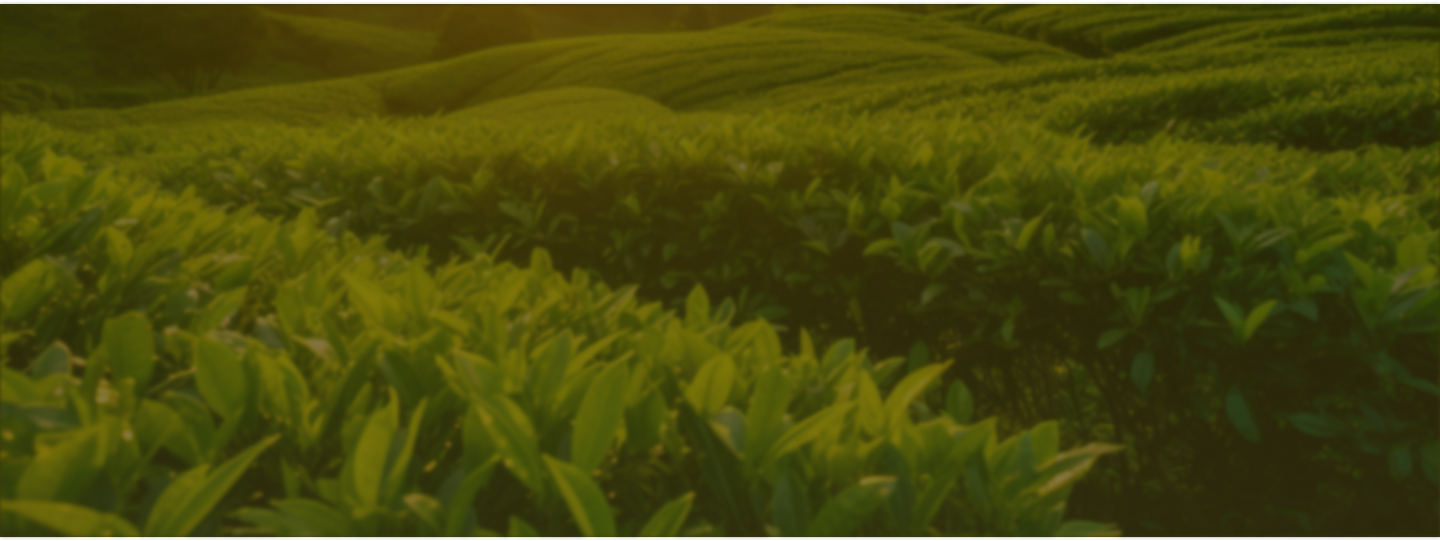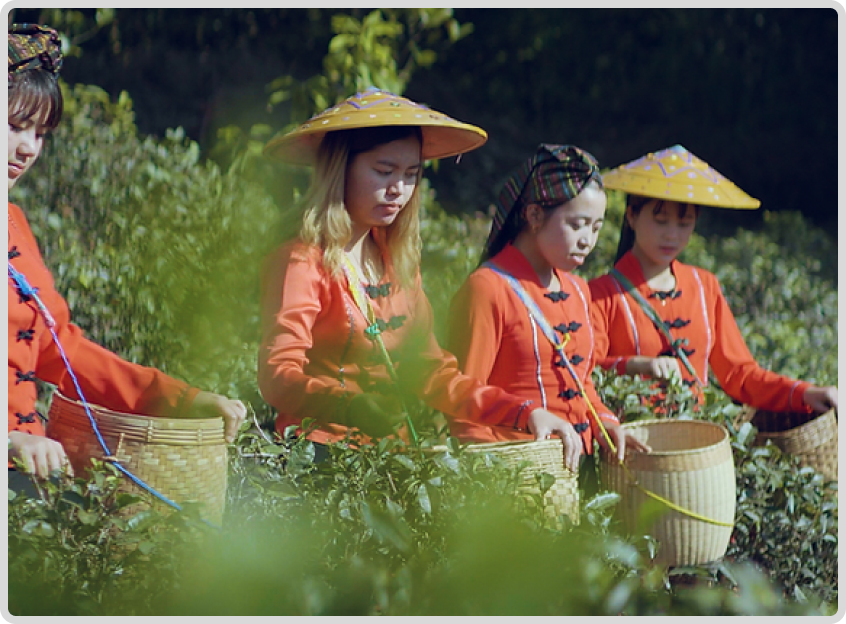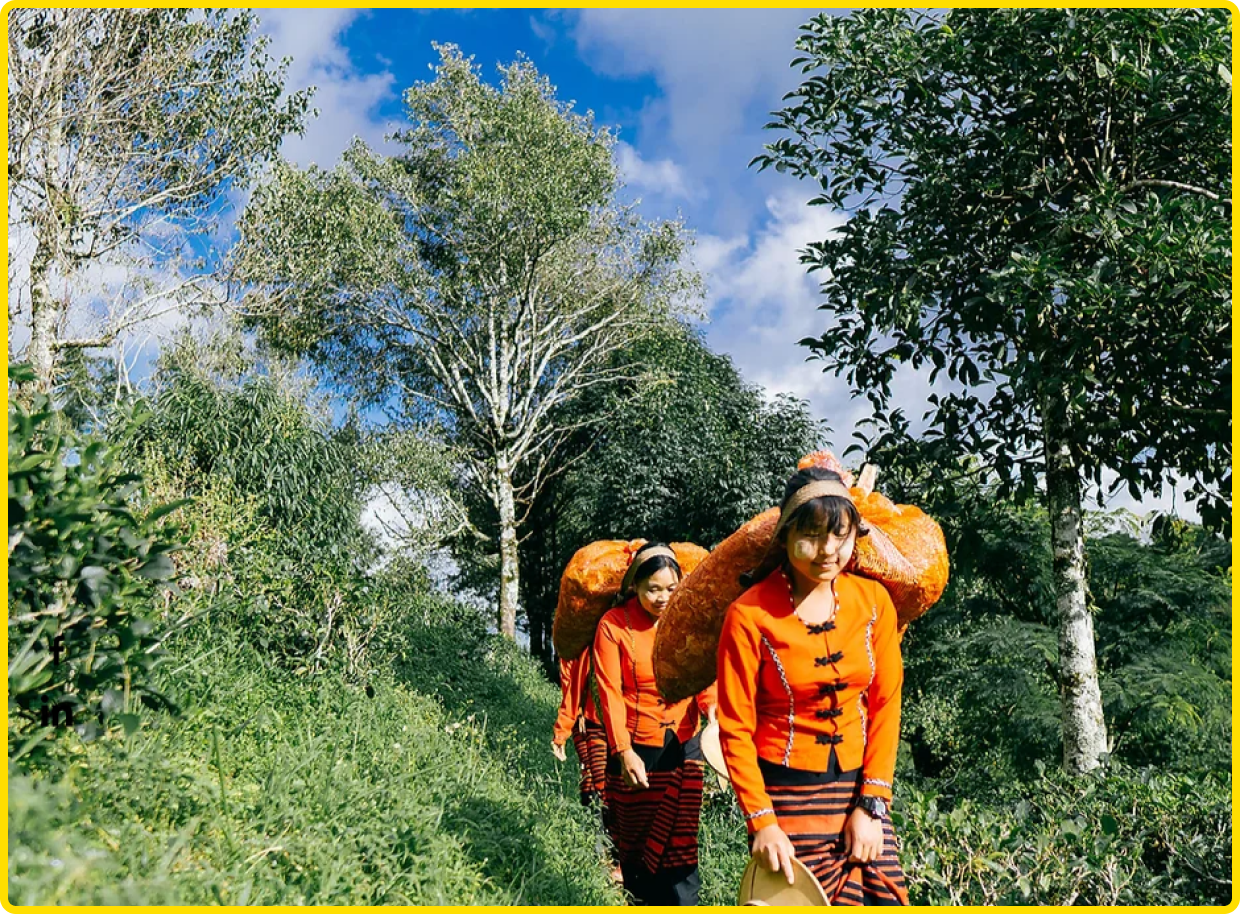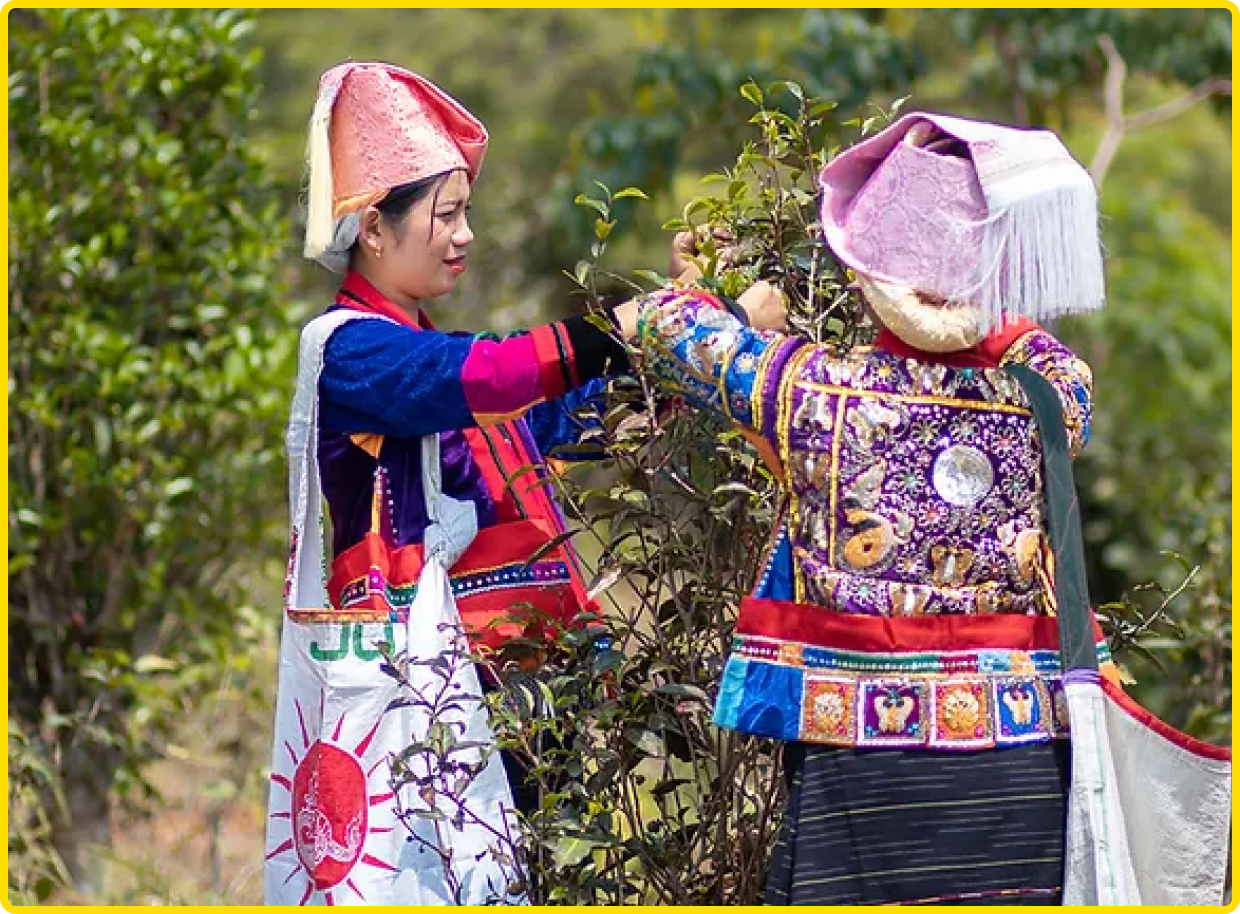

COMMUNITY

The largest tea plantation areas are in mountain regions such as Southern Shan state and Northern Shan State with tea leaves mostly being sourced from Shan State, Pyin Oo Lwin and Mandalay. The Pinlaung region, in Southern Shan State, constitutes one of the biggest.
The tea growers there are mostly ethnic groups such as the Palaung, DaNu, PaOh and Shan peoples, whereas in Pindaya and Ywangan the cultivation is mostly done by the DaNu tribes.
All these indigenous peoples are intrinsically part of the tea heritage since it is they who continue to cultivate tea as a main crop, in traditions handed down through generations. Namhsan, one of the tea primary regions in Northern Shan State, is where the Ta'ang people have cultivated tea since early 1200 AD.

Besides being emblematic of the rich heritage of tea running through the centuries in the country, the devotion of the ethnic groups to tea plantations is a characteristic which is infused into the uniqueness of Myanmar tea. Plucked by hand, by those who have a strong connection to, and love, for nature and the land, Myanmar tea offers something special to the consumer. At the same time, teacultivation is also a significant contributor to rural development, poverty reduction and food secur... Read More

By increasing the demand of Myanmar tea, as well as supporting local farming communities in their efforts to improve their productivity and the quality of their teas, MTA aims to raise the standards of living for all those engaged in the sector. In many of the tea producing locations of Myanmar, the plantations are vital to thesurvival of these traditional tribal communities. Two thirds of Ta'ang people (the total estimated t... Read More